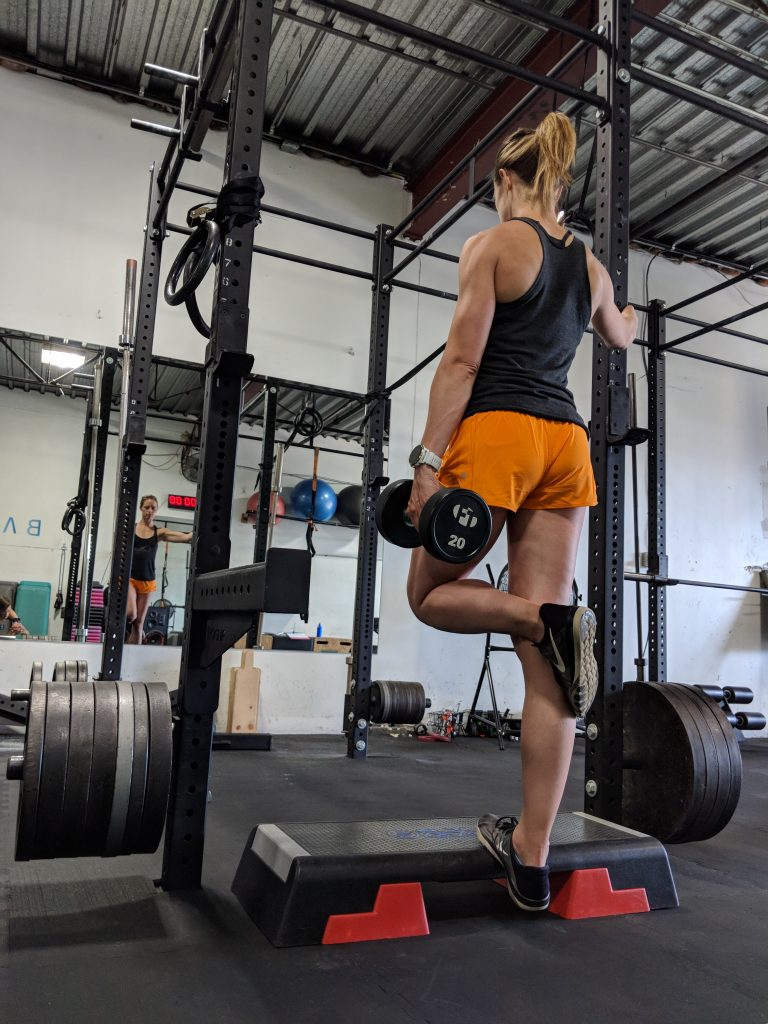People tend to write off or complacently accept their ankle issues. But the truth is, when your ankle mobility is less than ideal, there’s a reason and it should be addressed.
The ankle joint requires a specific amount of mobility in a particular range of motion so that many lower body movements can be executed properly. If you lack that range of motion at your ankle joint, your body will find it elsewhere and create the range of motion it needs to. This is called a compensation, and it comes at a cost.
The most common ankle issue we see is a lack of ankle dorsiflexion; which essentially means that you are unable to or struggle pulling your toes up towards your body.
Here are some common issues that can arise as a result of poor ankle mobility:
- Increased rotational torque at the knee
- Rounding through your lumbar spine when performing movements that require hip flexion past 90 degrees (ie. deep squats or high step ups)
- Collapsed arches, bunions, hyper-pronation in the feet, anterior knee pain, hip issues and low back pain (when you walk or run with tight ankles for an extended period of time)
The biggest problem with tight ankles is that they can often go unnoticed. In fact, most don’t become aware that they have a limitation until they experience one of the negative affects of the compensation.
So how do you address a compensation if you don’t even know you have it?
The simple answer is to book a strategy session with a kinesiologist (like us) or physio. We can help diagnosis whether or not you have a compensation.
You can also do preventative work.
Below I outline a strategy to address and correct your ankle mobility. This strategy can be used to fix stiff ankles. It can also be used as a preventative sequence to keep you from developing them.
Ankle Mobility Correction One / Soft-Tissue Work
A great way to address stiff ankles is to use a stick to release your calf and shin region. We call this soft-tissue work.
To get started, find the areas of tension in the calf region (gastrocnemius and soleus) as well as the front of the shin just lateral of your tibia (tibialis anterior). When you find a tension nugget, apply gentle pressure and slowly roll it out with the stick. You don’t need to be super aggressive with pressure. Just use enough to release the tension.
Another useful release method is to use a golf ball to release the smaller muscles on the bottom of your foot. When using this method, focus on gently rolling the area of tension for one-minute per foot. I recommend doing this in a seated position. It makes it a lot easier.
Ankle Mobility Correction Two / Calf Stretching

A problem with stretching alone is that most common stretches don’t generally offer any strengthening effects to the gains in muscle length or joint mobility you’re creating with that stretch. That’s not the case with this stretch.
I really like this stretch below it lengthens your gastroc and soleus muscles while also gently contracting them in a lengthened position. You can also add weight to the stretch to further add an isometric contraction at your new found end range of motion.
How to: Get into position and hold stretch for 60-90 seconds per side.
Pro Tips:
- Performing 1-2 sets of 8-12 Single Calf Raises in a maximal range of motion directly following this stretch is a great way to further increase your strength and stability in your ankle region.
- Make sure you do not feel any pinching in the front of your ankle when doing this stretch. If you do, ease off until you only feel a stretch in the calf and/or achilles region.
Ankle Mobility Correction Three / Mobilization Drills
Sometimes ankle mobility can become so bad that it stops you from being able to move through your ankle all together. When this happens you need to re-establish ankle dorsiflexion. The mobilization drill below will help facilitate this.
How to: Complete 10-15 reps per side.
When performing this drill, you don’t necessarily have to set up a band like I did. But it does help give you a bit of traction at the ankle joint; which can help a particularly stiff/stubborn ankle move.
Strengthening your dorsiflexion pattern can also help to improve your ankle mobility and function. The easiest way to do this is with a drill we call the Anterior Tibialis Raise. Some commercial gyms may have a machine dedicate to this. But you can also experience the same benefits with the drill below if you don’t have access to this machine.
How to: Lean against a wall and bend your knees slightly. Aim to hold each contraction for 2-3 seconds. I recommend doing 2-3 sets of 12-20 reps.
Closing Recommendation
Though each of the exercises outlined above can be completed on there own. I recommend that you perform them in this order as sequence (ideally systematically before a strength workout):
- Soft-Tissue Work
- Calf Stretching
- Mobilization Drills
You can also just sneak these drills in between rest sets while you’re working out.
On the flip side, I don’t recommend that you do this sequence directly before a long run or sprint. Save it for after.
If you have any questions about ankle mobility, or would like someone to diagnosis whether or not you have poor ankle mobility, book a strategy session with us.
Happy flexing!
Andrea





